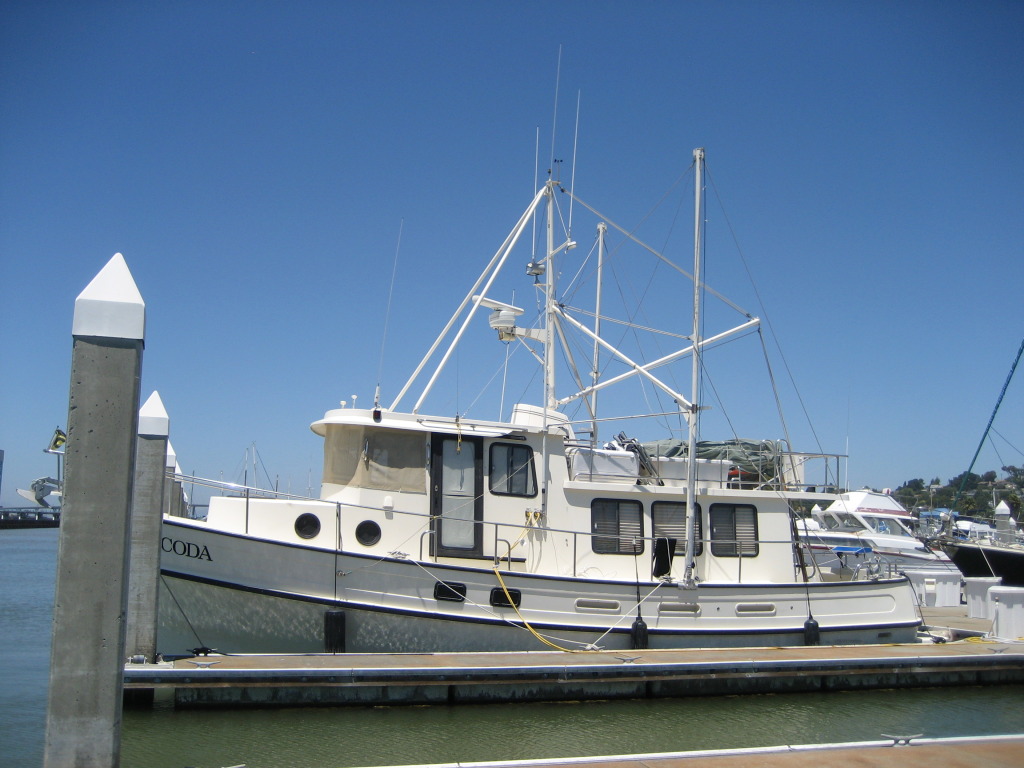The snap-back roll is typical of a semi-planing hull with a fairly flat after-section and hard chines. This configuration does a good job of minimizing roll but only up to a point.
We dont mind the snap-back roll but from what I read a lot of people really hate it.
The effctiveness of steady sails seems to be very dependent on the type of boat. We contemplated having one made, not for roll dampening but for reducing hunting on a mooring or at anchor. We first talked to a number of owners of our brand of boat who had steady sails and the almost universal consensus was that they do a good job of reducing hunting while moored or anchored but are almost totally ineffective at reducing roll while underway in a beam sea. That's for this particular make; I have no idea how effective they are or aren't on other makes and configurations.
Another consideration that owners brought up was the risk that a steady sail could overpower the mast stay fasteners if the wind was strong enough. This, of course, is totally dependent on the strength of the mast's standing rigging setup. Our older boat has only two stays for the mast, and their anchoring system on the flying bridge, while sufficient for boom loads not to exceed 200 pounds, is not the strongest on the planet. Newer versions of the same model boat have four stays although I don't know if their anchoring system is any better.
In the end we decided not to bother with having a steady sail made and setting up the mast and boom with track and running rigging. The hunting issue on a mooring we deal with by deploying a Fortress off the stern which, with its light weight and effctive design, is a fairly quick and easy process.
If we had a boat with roll chacteristics we really didn't like, I think we would go for the passive paravane method of roll dampening if the boat could be properly set up for it. I have nothing against active stabilizers in terms of their effectiveness or ease of use. I simply have an inherent reluctance to make something like a boat any more complex than I think it needs to be to accomplish what we want it to accomplish. I'm not anti-technology, I'm anti-having-to-pay-to-fix-technology when it breaks. If somebody
else is going to pay to fix it, well then, the sky's the limit, right?



 If and when we get the time to really stretch our legs is toping everything off going to help at all with roll? Should I be considering adding ballast because the reel and outriggers are gone ?
If and when we get the time to really stretch our legs is toping everything off going to help at all with roll? Should I be considering adding ballast because the reel and outriggers are gone ? What he said!
What he said!